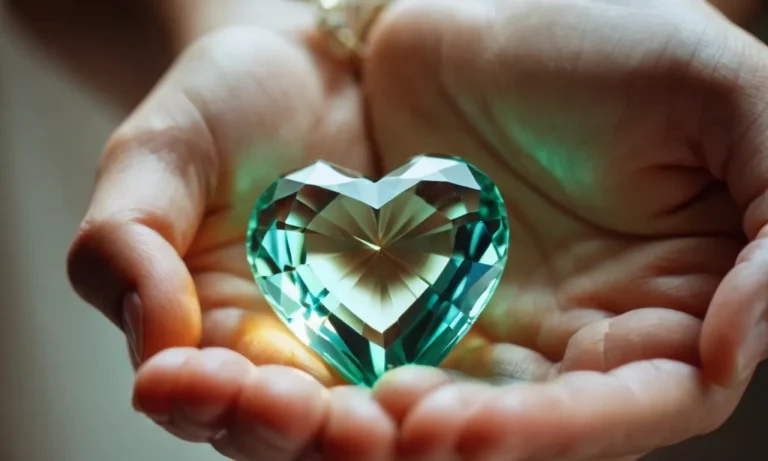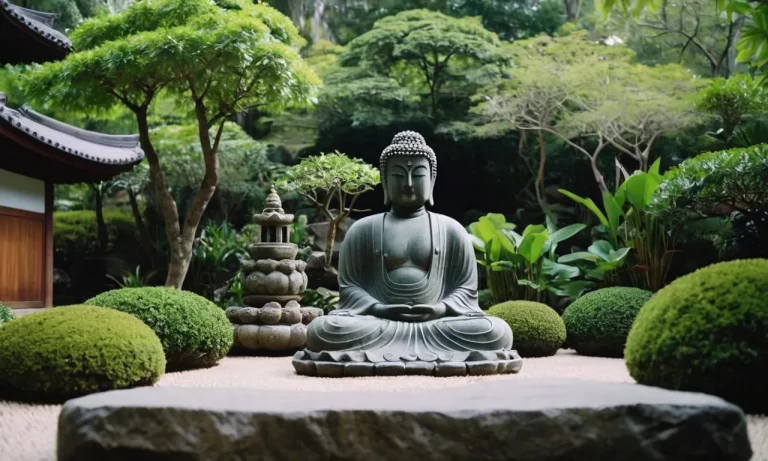In our busy modern lives, we often overlook the simple wonders of nature that surround us each day. One such wonder is the occasional daytime moon. If you’ve ever caught a glimpse of that glowing orb high in the bright blue sky, you probably paused to take in its mystical beauty.
Seeing the moon during daylight hours can be a spiritually enlightening experience. The moon has long been associated with subtle energies, intuition, and the realm of the divine feminine. When it appears in the day sky, the moon brings a touch of magic and awakens us to the hidden potentials of the present moment.
In this comprehensive guide, we’ll explore the deeper meaning and spiritual symbolism of the daytime moon. You’ll learn about moon phases and lunar cycles, moon mythology and folklore, and how to harness the moon’s energy for growth and healing.
Moon Phases and Lunar Cycles
Understanding the phases of the moon and the lunar cycle can provide valuable insights into the spiritual meaning and significance of seeing the moon during the day. The moon goes through a continuous cycle of eight distinct phases, each with its own unique energy and symbolism. These phases are determined by the moon’s position in relation to the sun and the Earth.
The Lunar Cycle
The lunar cycle begins with the new moon, when the moon is not visible from Earth. As the moon moves in its orbit, it gradually becomes more visible, entering the waxing phase. This phase culminates in the full moon, when the moon is fully illuminated and appears as a beautiful sphere in the night sky. After the full moon, the moon enters the waning phase, gradually becoming less visible until it reaches the new moon again.
Waxing and Waning Moons
During the waxing phase, the moon is said to be growing in energy and influence. This is a time of expansion, manifestation, and increasing abundance. It is a favorable time for setting intentions, starting new projects, and taking action towards your goals. On the other hand, during the waning phase, the moon is said to be diminishing in energy. This is a time for release, letting go, and clearing away what no longer serves you. It is a time for reflection, introspection, and making space for new beginnings.
Moon Signs and Their Meanings
In astrology, the moon is associated with our emotions, instincts, and innermost desires. The position of the moon in the zodiac at the time of your birth is known as your moon sign. Each moon sign has its own unique characteristics and influences how we experience and express our emotions. Understanding your moon sign can provide valuable insights into your emotional needs, reactions, and behaviors.
For example, if your moon sign is in Cancer, you may be highly intuitive, nurturing, and sensitive to the emotions of others. If your moon sign is in Aries, you may be passionate, impulsive, and assertive in expressing your feelings. Exploring your moon sign can deepen your self-awareness and help you align with your true emotional nature.
For more in-depth information on moon phases, lunar cycles, and moon signs, you can visit www.astrology.com and www.moongiant.com. These websites provide comprehensive resources and tools for exploring the spiritual meaning and significance of the moon in astrology and personal growth.
Mythology and Folklore of the Moon
The moon has held a significant place in human culture since ancient times. Across various civilizations, the moon has been associated with countless myths, legends, and spiritual beliefs. Its mystical presence in the night sky has captivated the imagination of people for centuries.
The Moon in Ancient Cultures
Ancient cultures, such as the Egyptians, Greeks, and Mayans, revered the moon as a powerful symbol of divinity. In Egyptian mythology, the moon god Khonsu was believed to govern the passage of time and the cycles of life and death. In Greek mythology, Selene was the goddess of the moon, associated with the night, dreams, and magic. The Mayans, on the other hand, saw the moon as a deity called Ix Chel, associated with fertility and childbirth.
Moon Deities and Archetypes
Throughout history, the moon has been associated with various deities and archetypes representing different aspects of life. The moon often symbolizes femininity, intuition, emotions, and the subconscious mind. It is associated with the nurturing and cyclical nature of women, as well as the ebb and flow of emotions. In many cultures, the moon is linked to the goddess archetype, representing love, fertility, and wisdom.
Legends and Folk Beliefs about the Moon
Legends and folk beliefs surrounding the moon are abundant across different cultures. For instance, in Japanese folklore, there is a tale of the “Moon Rabbit” who resides on the moon, pounding rice cakes with a mortar and pestle. In Chinese culture, the Mid-Autumn Festival celebrates the moon’s beauty and is associated with family reunions and the sharing of mooncakes. In Native American folklore, the moon is often seen as a protector and guide.
These various mythologies and folk beliefs around the world highlight the deep spiritual and symbolic significance of the moon. Its presence during the day, although less common, can be interpreted as a special message from the universe, prompting us to explore our inner worlds and connect with our intuition.
Harnessing the Moon’s Energies
The moon has long been associated with mysticism and spirituality. Its presence in the daytime sky is a unique and powerful phenomenon that carries special meaning and significance. By harnessing the energies of the moon during the day, we can tap into its spiritual essence and enhance our connection to the universe.
The Moon and Intuition
Seeing the moon during the day is often seen as a sign of heightened intuition. It is believed that when the moon is visible in the daylight hours, our intuitive abilities are amplified. This is a time to listen to our inner voice and trust our instincts. The moon acts as a guiding light, illuminating the path ahead and helping us make decisions with clarity and confidence.
Moon Rituals and Ceremonies
Many cultures and spiritual traditions have rituals and ceremonies centered around the moon. These practices can be performed during the day when the moon is visible, allowing us to harness its energies and incorporate them into our spiritual practices. Whether it’s setting intentions, performing gratitude rituals, or conducting moon salutations, engaging in moon-centered rituals can help us connect to the deeper meaning of the moon’s presence in the daytime sky.
Moon Magick and Crystals
Moon magick is the practice of using the moon’s energy to manifest desires and intentions. Crystals are often used in conjunction with moon magick to amplify its effects. During the day, when we see the moon, it is an opportune time to charge our crystals by placing them in direct moonlight. This process enhances their energetic properties and allows us to harness the moon’s power for manifestation and healing.
When working with the moon’s energies, it is important to trust your intuition and follow your own spiritual path. Experiment with different moon rituals, ceremonies, and crystal practices to find what resonates with you. Remember, the moon’s presence during the day is a reminder of the interconnectedness of the universe and the infinite possibilities that exist within each of us.
Conclusion
The moon’s cycles have long been associated with growth, healing, and harnessing the powers of intuition and inner wisdom. When we take time to observe and attune to the moon, even during the day, we open ourselves to its magic and mysteries.
Seeing the moon in the daytime sky is a gift – a chance to realign with natural rhythms and explore the mystical side of life. Use the insights from this guide to deepen your connection to the lunar cycles and work with the moon’s energies for spiritual growth.






